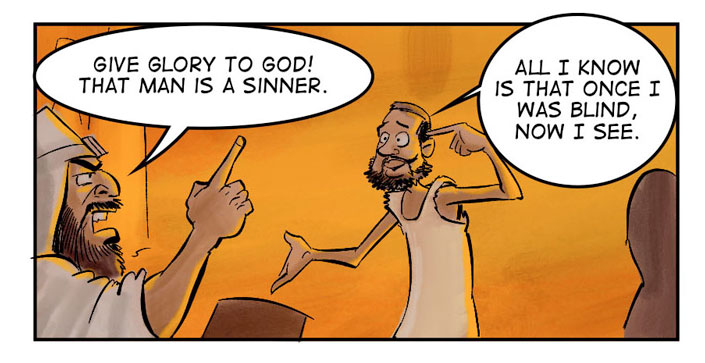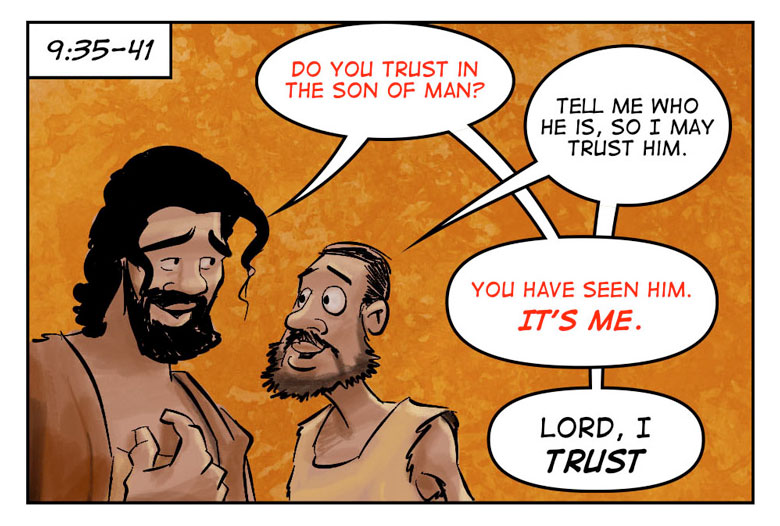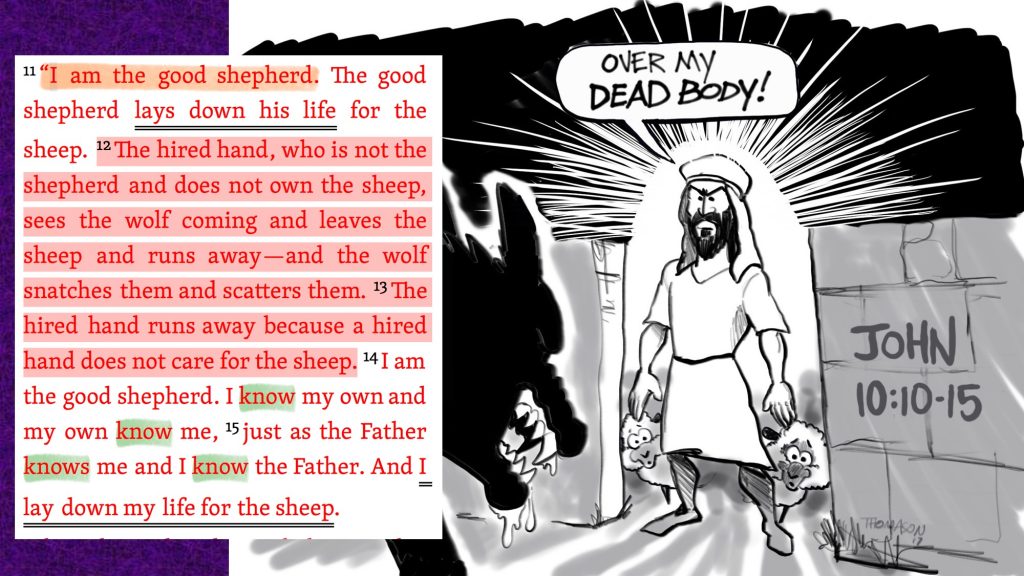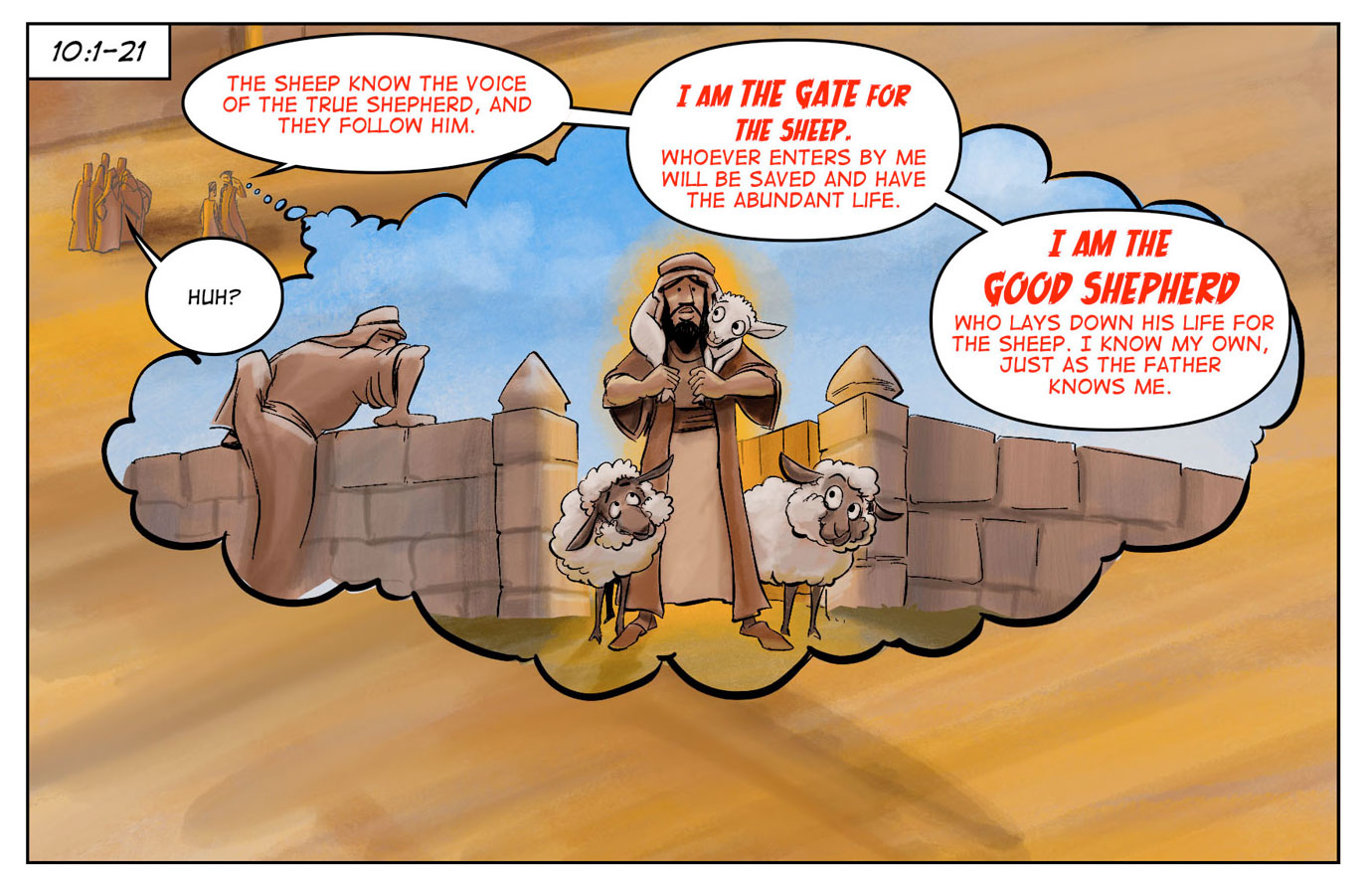
This week marks the beginning of the Lenten Season. For the next seven weeks we will walk with Jesus toward the cross, the grave, and the resurrection. We literally mark this beginning by smearing ashes on our foreheads on Ash Wednesday.
For those of us following the Narrative Lectionary, Wednesday’s service presents a challenge. How do we connect the reading, John 10:1-18, with Ash Wednesday?
Allow me to visually meditate on the text. If any of these images intrigue you, feel free to use them in your own preaching and teaching.
The story actually begins in John 9:1.
Jesus and his disciples had narrowly escaped an execution by stoning in John 8:59, and now they are walking down a road in Jerusalem and find a blind man. This man was born blind and had been a begger his whole life.

This man has been made new (born anew of water and spirit, see John 3) through the Adamah and water of Jesus. Now he can see.
He is the first person in Jersualem to actually see Jesus for who he is. Remember, in John, geography is theology. The people–especially the religious leaders–in Jerusalem are blind and deaf.

This healing causes quite a stir in the city. The religious leaders–specifically the Pharisees–interrogate the man. They are perplexed as to how a law-breaking sinner like Jesus could do something like this.

The Pharisees were so narrowly focused on a particular way of interpreting the Law of Moses that they were blind to the work of God that was standing in front of them.

The Pharisees’ fixation on law-keeping and boundary guarding led them to expel a beloved lamb of God’s flock and brand him as a sinner.
Those whom God had called to be the shepherds of the flock of Israel were abusing and scattering the sheep.
They just couldn’t see God at work.

When Jesus heard that the man had been expelled, he caught up with him. The man sees Jesus for who he is, and trusts him.

Jesus knows the Pharisees are eavesdropping, so he uses this moment to confront them.
Jesus accuses them, the supposed shepherds of Israel, of being blind, deaf, thieves and robbers. It’s no wonder why they wanted to kill Jesus.
Here is where our reading for this week begins.
It is important to place these words in the context of an exhortation to the Pharisees. Jesus is drawing a stark contrast between their failure as leaders and his model of what a good shepherd looks like.


Here are some concluding observations about this text.
Jesus paints a portrait of a good shepherd:
- The sheep hear his voice.
- He goes ahead of them.
- The sheep follow because they know his voice.
- He is the gate. His way leads to abundant life.
- He is the good shepherd who lays down his life.
- God, the shepherd, and the sheep all KNOW each other.
- There are OTHER SHEEP. They will listen. There will be ONE FLOCK.
- Life is better together.
The gate = The way
There is a way that leads to death. There is a way that leads to life.
The Pharisees thought the way to life was strict adherence to the Law of Moses, retributive justice, and a hard boundary that marks who is “in” and who is “out.”
Jesus came to show us that that is the way that leads to death and destruction.
The gate for the sheep that leads to life is the way of love that Jesus demonstrated throughout his ministry and ultimately by laying down his life, and forgiving those who murdered him.
The radical way of love that welcomes the blind man, and the leper, and the prostitute, and the marginalized, and the Gentile is the way that leads to the abundant life for which this universe was created.

How does this connect to Ash Wednesday?
I see a connection between the mud that Jesus used to heal the man’s blindness, being a good shepherd, and the ashes of ash Wednesday.
The key verse is John 10:10.
I have come that they might have LIFE and have it ABUNDANTLY.
We often think of the ashes of Ash Wednesday as a symbol of death. We say, “Remember you are going to return to ashes.”
But what if we said it this way. “Remember that God brought you, Adam, from the Adamah, and you will return to the Adamah.”
The Adamah is the life-bristling universe itself. The universe is continually expanding and God is always inviting all things into being through love. (see this post on Open and Relationship theology).
Our moment as Adam–our personal experience of life–is one part of the cosmic dance of life. We were part of the Adamah before our unique Adam moment, and when we die, our unique experience of relationship with the universe will have actually shaped the next moment of the universe. Because of our Adam moment, when we return, the Adamah will be better.
This life we live is one in which we are daily invited to live to the fullest; to abundance; to overflowing with the love of God for all things.
Smearing ashes on the forehead is a reminder that our one life matters. We are invited to follow the good shepherd into the Kin-dom of Love, even if it leads to the cross.
Download PowerPoints and Image Packs
If you enjoyed these images and would like to download them for your own preaching and teaching, they are yours to have for free. Note that these images span two pages of A Cartoonist’s Guide to John, so you will need to download both sets to get them all.
Explore Every Book of the Bible
Find cartoons, illustrations, videos, commentaries, and other helpful information about every book of the Bible.







The message never get old. Keep on keeping on!